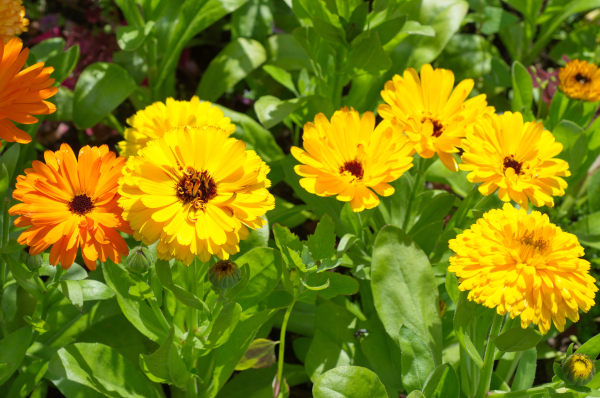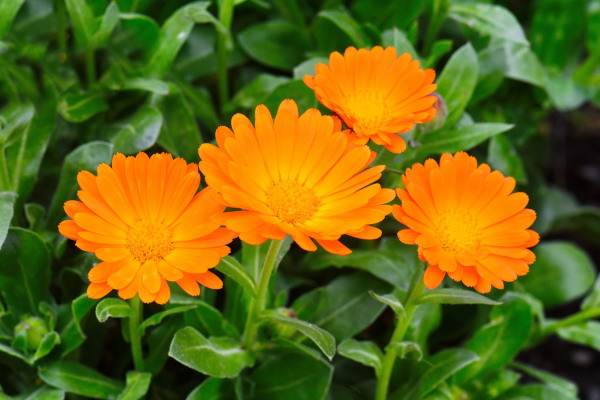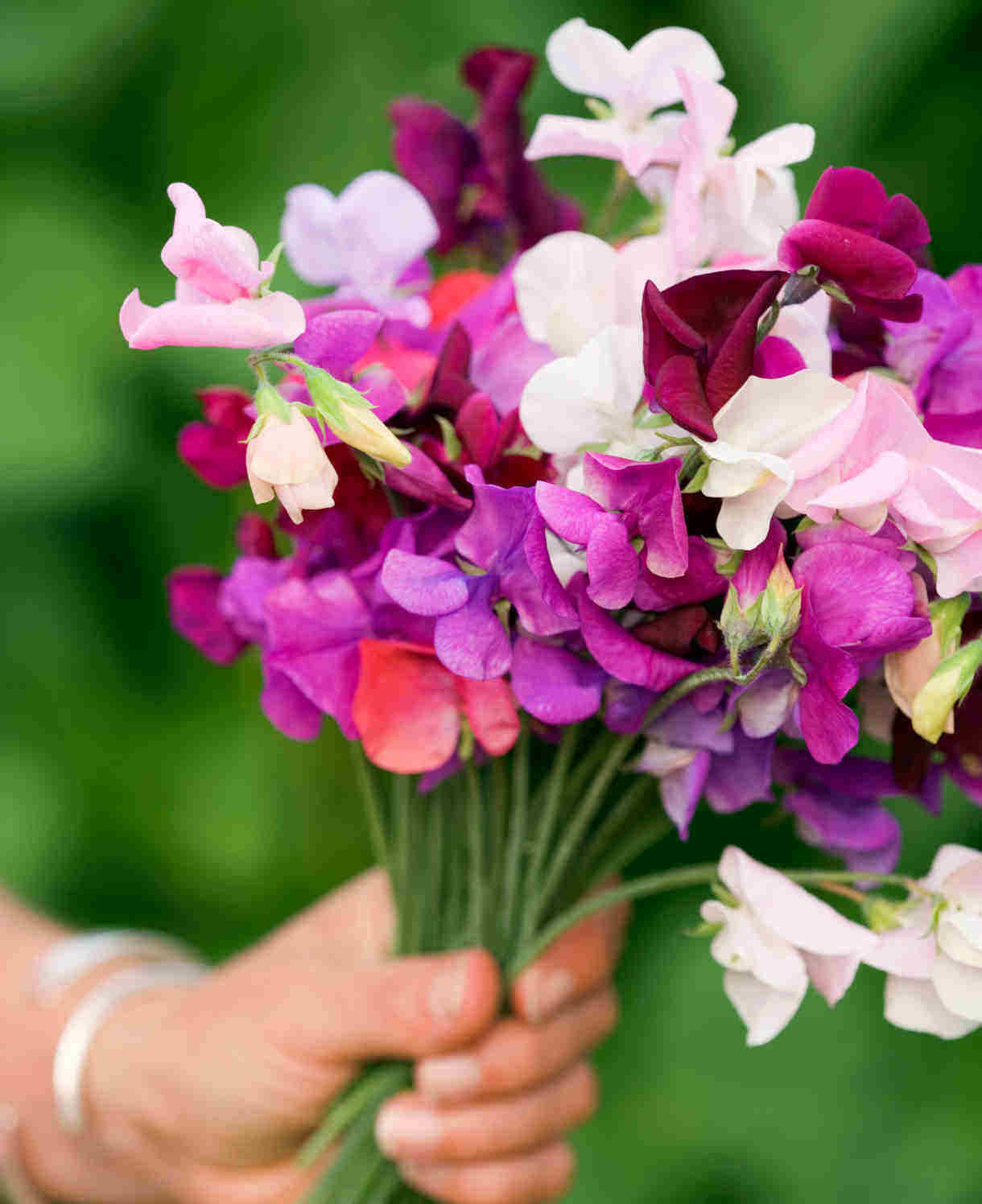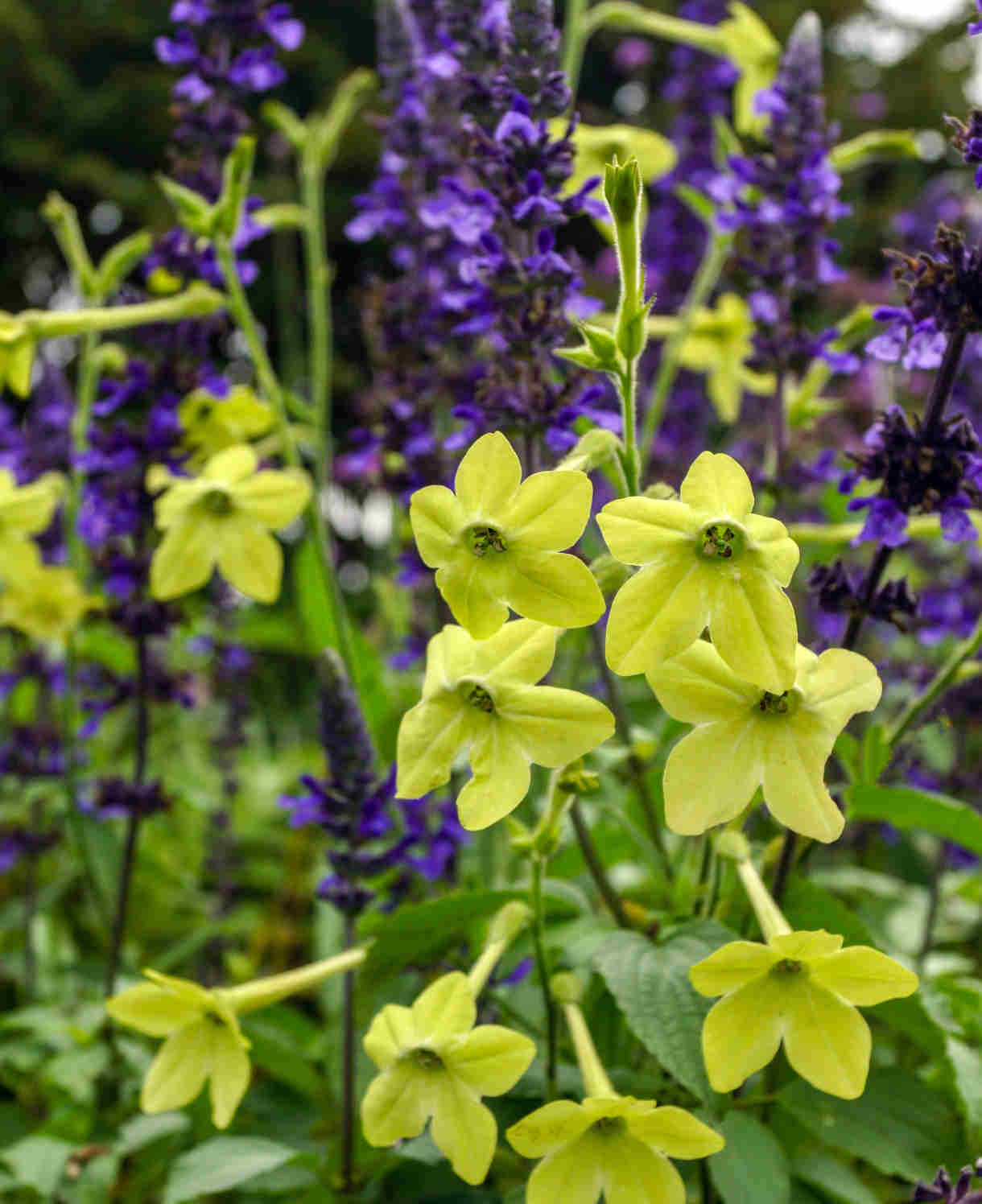How to grow Calendula
This low-growing, bushy member of the daisy family is a cottage garden staple, grown for its unfussy nature, long flowering period (usually blooming throughout summer and autumn, sometimes even beyond in a mild winter), and keenness with which it self-seeds throughout the garden. Highly attractive to pollinators, it is commonly grown as a companion plant in productive gardens, and the edible petals can be used for both culinary and medicinal purposes.
Calendula is a hardy annual also known by the common names pot marigold and English marigold. It is not to be confused with common marigold, which is a different, less hardy genus (Tagetes).

Key Information
Position
Soil Conditions
Hardiness


Where & when to plant Calendula
For best results, plant in autumn or spring. An autumn planting can be done by those gardening in mild conditions (and broadly speaking, this is the southern half of the UK). For those liable to cold winters, it is best to wait until spring (generally the northern half of the UK). Planting can also be carried out in summer, though be prepared to water regularly.
Calendula is ideally suited to summer bedding displays, pots, path edges, or used as a cheerful gap filler towards the front of a border.
How to plant Calendula
- For planting in the garden, dig the soil area removing any large stones and weeds and breaking up any lumps. Rake level and firm with your heels. Rake level again.
- Water plants well and allow to drain before planting.
- A good tip is to dig a hole twice the size of the root-ball. Fill with water and allow to drain before placing in the plant.
- Place the plant in the hole, ensuring the top of the root ball sits level with the surface of the soil. Too low and the plant may rot, too high and the roots can dry out.
- Backfill with soil and firm in gently with your foot.
- Soak well with water.
- Mulch around the base with well-rotted organic matter.
- For planting in containers, first choose an appropriately sized pot. You may wish to grow your calendula on its own in a pot, or as part of a larger, mixed container display. Either way, ensure there are plenty of drainage holes in the bottom.
- If you are using a large or heavy pot, it can be a good idea to fill and plant it in situ to save yourself the trouble of moving once full.
- Use a good quality potting compost with some horticultural grit mixed in and, if not already present (check the labelling on the bag) some slow-release fertiliser granules.
- Start by partially filling the pot with compost; enough so that when placed on it the upper surface of the root ball is about 3cm lower than the top of the pot.
- Fill around the plant with compost, firming down with your fingers then adding a little more so it is held tight.
- Pick up the container (if you can!) and lightly tap on the potting bench or ground a few times to help further settle the compost around the plant.
- Soak well with water.
- A mulch with horticultural grit will look attractive and help to prevent a ‘cap’ or crust forming on the top of the compost (something container plants can suffer due to the artificial nature of their watering).

What to plant with Calendula
For a garden bursting with summer blooms, team calendula with other classic, colourful garden annuals such as cosmos, sunflower, sweet pea, and nicotiana. Use these to plug any gaps in borders, fill empty containers, or create a beautiful and beneficial floral element to allotments and veg patches.



How to care for Calendula
Pruning and Deadheading
Deadhead spent flowers to prolong flowering, though leave a few intact if you wish to encourage self-seeding.
At the end of the growing season, simply remove to the compost heap.
Watering
Water newly planted calendula regularly until established (i.e., for the first few weeks in the ground), and then in very hot dry spells after this. Annuals don’t have time to put out extensive root systems, so need to be kept an eye on during warm weather – even drought tolerant plants such as calendula. Aim for consistently moist but not soggy soil, allowing the top couple of centimetres to dry out before watering (insert your finger into the soil to check this).
Container-grown calendula need to be watered regularly throughout the growing season as these can dry out very quickly, especially those in smaller containers. Again, allowing the top few centimetres of compost to dry out between soakings is a good way to avoid overwatering, though be aware that in the height of summer this can happen in as little as 24 hours.
Feeding
To get the most out of summer bedding plants such as calendula, regular feeding is a must – particularly when grown in a container.
In a container, calendula should be potted in a good quality compost with slow-release fertiliser granules mixed in, then fed with a high potassium liquid feed, such as tomato feed, at weekly intervals throughout the growing season to boost flowering.
In the open ground, mulch newly planted calendula with well-rotted organic matter, i.e., a layer of manure or garden compost applied to the soil around the plant. As well as boosting the nutrient content of the soil, this has the added benefit of suppressing weeds and locking in moisture.
After this, a weekly or fortnightly application of high potassium liquid feed, such as tomato feed, will boost performance significantly.
Cold Protection
While calendula is hardy, it can still be damaged by harsh weather when young. If you garden in a frost pocket or northern part of the UK, either delay planting out until late spring or protect new plantings with a cloche or fleece whenever a hard frost is forecast.
Pests and Diseases
Calendula doesn’t tend to suffer from any serious problems, though can be susceptible to a fungal disease known as powdery mildew. This appears as a white, powder-like coating on foliage and is generally a sign that the plant is stressed – usually through lack of water, though other causes can include poor airflow, over fertilizing, or insufficient sunlight.
Prune off and dispose of any affected leaves, keep well-watered, and thin out surrounding plants to improve airflow and light levels. Do not be tempted to give the plant extra feed, as this will generate an excess of soft, new growth which is particularly susceptible to the fungus.
Another issue can be aphids. As always, our advice is that these are part of a balanced garden ecosystem and the best approach is to leave them to their natural predators (e.g. birds, ladybirds, and wasps). When numbers are so large, however, that their feeding starts to inhibit and disfigure growth, you may feel it necessary to take action. Regularly blasting off with a hose or wiping away with a cloth or piece of kitchen paper can help to keep numbers down without harming other members of the ecosystem.
How to propagate Calendula
The easiest way to propagate calendula is by seed sown directly into the soil. Either leave plants to self-sow (i.e., cease deadheading from mid to late summer), or collect your own seed to sow manually.
Direct sowing can be done in either autumn or spring. An autumn sowing is suitable for milder parts of the country and will result in bigger, tougher, earlier-flowering plants, though it’s worth noting that the seedlings may need protecting with a cloche or fleece in unusually harsh winter weather. A spring sowing is best if you live further north or are prone to very cold, wet winters. Look out for weed seeds beginning to germinate in the garden – a good indicator that the soil is warm enough to get sowing.
- Seeds are typically ready for collecting in late summer when they’ve turned hard and dark.
- Snip the seedheads from the plant using scissors or secateurs. Try to do this in dry conditions, and shake or separate the seeds into a small, labelled paper bag or envelope. Store somewhere cool and dry until you are ready to sow in either autumn or spring.
- Clear the area of weeds, and rake over the surface until you have a fine tilth.
- Scatter seeds thinly.
- Lightly rake over to incorporate with the soil.
- Water with a watering can fitted with a fine rose.
- When seedlings are large enough to handle, thin out to a spacing of approximately 10-15cm.
* Many plants carry Plant Breeders Rights and cannot be propagated for commercial purposes.
Common Calendula questions
- Does calendula come back every year?
The individual plants of calendula live for one year only, however if allowed to set seed (i.e., left intact until late autumn) new plants can be expected to pop up in the same spot the following year. - Will calendula grow in shade?
Calendula grows and flowers best in a sunny spot, though will be okay in some light shade. Deep shade is best avoided. - Does calendula grow well in pots?
Calendula is a great choice for a summer container display.




